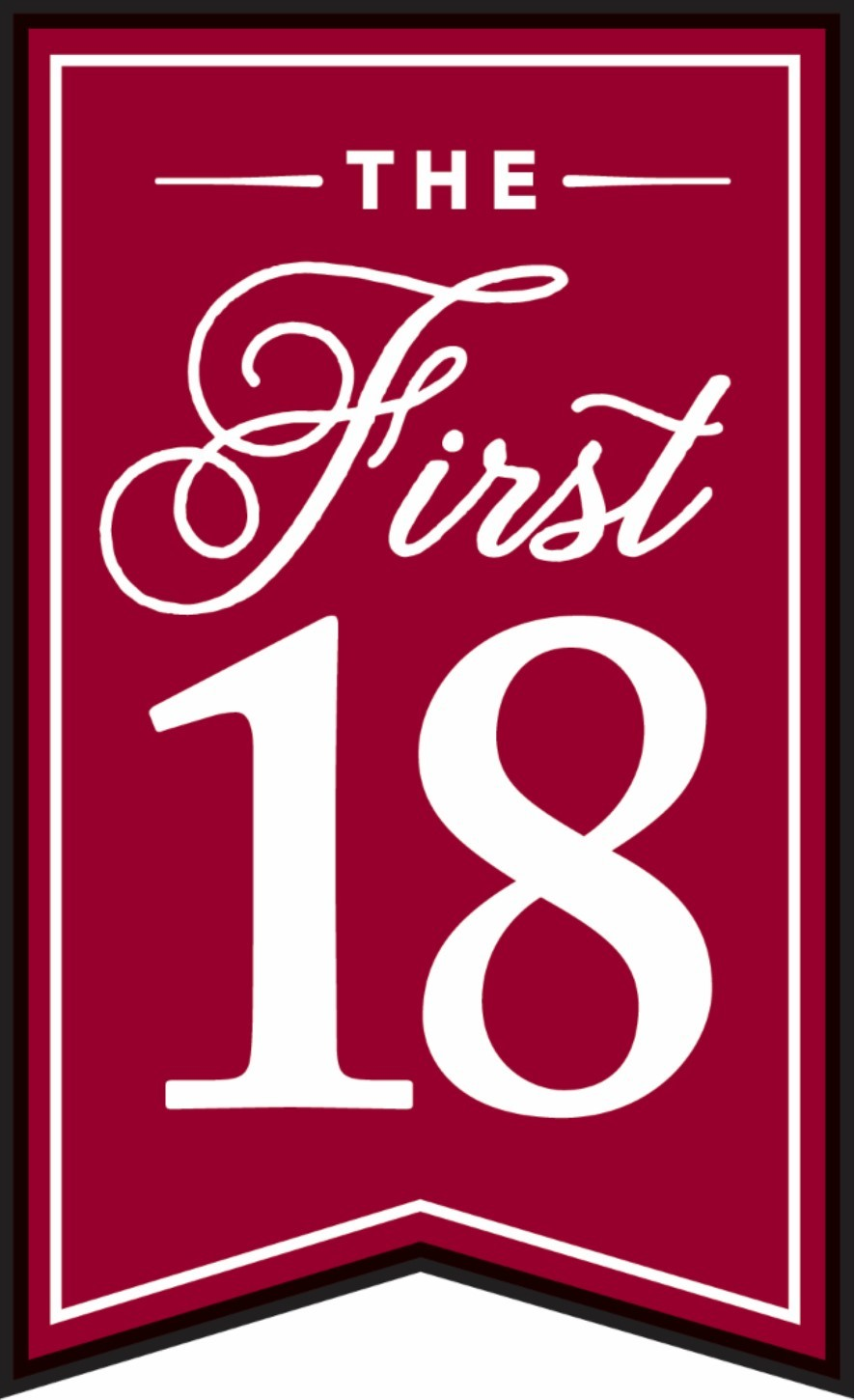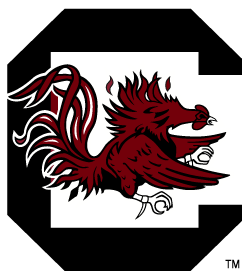
Video: The First 18 - Softball, Living a Childhood Dream
Oct. 13, 2015
Part 3 of a 6 part series on South Carolina’s first female scholarship student-athletes.
Click here for the full First 18 Digital Presentation with new stories appearing each day this week.
Playing college softball 40 years ago required a different level of toughness. Playing on grass fields with varying amounts of gravel, no dugouts, and dodging projectiles from adjacent fields seems unimaginable to the Division I student-athlete now, but this was the same time that scholarships were being provided to female student-athletes for the first time.
“It was a dream come true,” said Nona Kerr, who was part of the first class of female athletics scholarship recipients as a member of the softball team beginning in the fall of 1975. “It’s something I had never ever imagined would happened. My father (Gayle) was a scholarship athlete here at Carolina as well. He played football here. To get a scholarship was very special for me. Growing up a Gamecock, I was die-hard and that was really important to me. We were actually the first father-daughter combination of scholarship recipients. It’s was pretty exciting.”
After the implementation of Title IX, South Carolina made 18 scholarships available for female student-athletes for the first time in school history in 1975, with three going to each of the six sports. Nona Kerr, who hailed from Bishopville, South Carolina, had already been on campus since the fall of 1972, and had played softball, basketball and tennis at South Carolina before scholarships were awarded.
Teammate Jean Robbins, a native of Hickory, North Carolina, had a different path as one of the first three softball scholarship recipients.
“I wrote schools all up and down the east coast asking if they offered athletics scholarships,” Robbins said. “The University of South Carolina was the only one that answered back. They actually had a day where they invited all of the athletes on campus, and you came in and tried out. Before I left that day, they offered me a scholarship to come back. It was my opportunity to come to school.”
For Robbins, and some of the other members of the First 18, a scholarship was a life-changing opportunity to not only compete in intercollegiate athletics, but also receive an education.
“I was in search of financial assistance to get into school, so it was the big opportunity for me,” Robbins said. “I probably would have went into the military if I didn’t have it. My dad was in the Air Force, and I probably would have gone in that direction.”

Getting Off the Ground
In addition to receiving scholarships, the women’s programs were now under the guidance of the athletics department. However, the facilities and amenities that student-athletes enjoy today, were not yet available for the First 18. Scheduling classes to accommodate practice schedules was difficult as student-athletes did not have priority registration, and having women receive official excused absences from classes to travel was a whole new ball game as well.
“We were doing a lot of Wednesday games and some weekends,” Kerr said. “There wasn’t anything in place with tutoring or taking care of us academically.”
Crowds for home games were sparse and were played in the same location where the current Carolina Softball Stadium at Beckham Field is located, but that area wasn’t as well defined as it is today.
“It was very hard to get to,” Kerr said. “We were bumped up right to the back of the track and the old baseball field. There was one set of stands about three rows high. People just sat around on the ground. Baseball was hitting balls on to our field, and we’d hit foul balls to their field. And you had folks over on the track doing the shot put. We had on a Carolina uniform. We got hats one year. We thought that was really great. We put on the uniform, and it didn’t matter that we were sitting on a wooden bench. We didn’t know any different, and it was wonderful.”
The innocence around the birth of the modern women’s sports era made the student-athletes genuinely appreciative for anything they did receive.
“I don’t recall getting any gear that we kept,” Kerr said. “One year we got a garnet t-shirt. I kept that t-shirt for years. There was no equipment. No gloves. No shoes. There was just a group of bats, maybe 10. They were various sizes and weights, and you just found one and batted. Almost all of us had little baseball gloves. I came to school with my dad’s glove because I had never played organized softball. When I found out there was a softball team, I was ecstatic.”
“We did have catcher’s gear because this was when they were transitioning to fast pitch,” Robbins said. “Everything in the Southeast was slow pitch back then. It was exciting.”
That excitement also led to some memorable moments when the program was later provided with a pitching machine.
“We went up into the gym,” Robbins recalled. “So they put me in the catcher’s gear, and they were trying to figure out how to get this pitching machine to throw balls at us. It was bouncing over my head and bouncing off the wall all across the gym. It was hilarious. Then they put the pitching machine out on field and we tried to take batting practice.”
“We had never seen a pitching machine,” Kerr continued. “Most of the people that were trying to run it had no idea how to adjust it or make it work. They even had us back there to catch with no catcher’s gear on.”
We took care of each other, and that was very important. We made things work even when they didn’t. We played in some tough conditions.
Nona Kerr
In some ways, the lack of those amenities helped bring the team together.
“We were very close,” Kerr said. “We traveled in vans wherever we went. We took care of each other, and that was very important. We made things work even when they didn’t. We played in some tough conditions ââ’¬” a lot fields with no fences. We didn’t even have a fence on our field. You had totally grass infields with a lot of rocks. So there were a lot of torn up legs from sliding.”
Equal Treatment
Overall, Kerr and Robbins said they were treated well and didn’t feel any sense of resentment by their male counterparts or teammates who were not on scholarship.
“It’s interesting because it wasn’t a big deal at the time,” Robbins said. “Nobody even recognized it. It’s kind of like, we got a scholarship and everybody just moved on and played.”
“We just blended,” Kerr added. “I don’t think anybody knew that we were on scholarship. There was nothing that we did differently. There was no meal plan. We didn’t have tutors that worked with us any differently. I signed a letter and it basically paid for my books.”
One of the fondest memories for Kerr was the team’s first trip to the Women’s College World Series which was then held in Omaha, Nebraska.
“We were definitely the ‘kids’ from South Carolina who had never been in that type of environment,” Kerr said. “Pitchers were throwing it pretty good there. We held our own, but we were nowhere near the caliber of the other teams that were there. They were more aggressive than we were. We didn’t realize it at the time, but we were playing a modified fast pitch/slow pitch style. The next year, we changed everything that we did as a team.”
“We were awe-struck,” Robbins added. “It made me envious. It made me want to go back and figure out how to hit that pitch. It was faster than the pitching machine.”
Initially the team wasn’t sure if they would even make it to Nebraska as a trip to the national tournament wasn’t in the budget, but Kerr’s father spoke to leaders of the Lettermen’s Association and the Gamecock Club and convinced them to raise funds for airfare so the team would not have to drive themselves.
“We thought we were big time,” Robbins said.
“It felt good,” Kerr said. “We felt that we were important, and that we made a difference. School was out, so we had thought we were on our own. It was fun. I think it became a budgeted item the next year.”

Taking Life Lessons Beyond the Field
Robbins is now a program manager for a manufacturing facility in Charlotte and has travelled around the world with her work, while Kerr recently retired after a career in education. Both agree that their experiences at South Carolina helped set them up for professional life.
“The team environment and the camaraderie and looking after one another, that just continues when you go out into the world and into the workplace,” Robbins said. “Again, it’s a team environment where you’re working towards one goal, which is the customer’s satisfaction.”
“You learned a lot about having goals, not just as an individual but as a team,” Kerr said. “The experience here gave me a push in that direction for life to do some of the things that I’ve done.”
Kerr was a teacher and guidance counselor before moving into administration. She retired a couple of years ago after serving as the principal at Myrtle Beach High School, where she also coached basketball, tennis, and softball for 18 years.
“The biggest impact it had on me was through my coaching,” Kerr said. “Every young lady that played was important. They had worth and potential, and even if they weren’t going to be a scholarship athlete, what they did on that court or the field is very important. The integrity of the game, the character not only on the field, but off the field, and the sportsmanship are all important. When were on the field, we were all best friends, and that was important. When we walked off the field, you didn’t have to be best friends, but everybody was part of the family. I think we really were family.”
While neither thought of themselves as pioneers, they own a sense of pride in being one of the First 18. They would also be glad to pass on some wisdom to female student-athletes today.
“Enjoy every minute,” Kerr said. “The privileges you will receive in this environment will be far more than anything you’ll ever see when you step out of it. Learn from it, but give back. Don’t just take what the university is giving you, but give back to that community and give back to the school.”












